Gastronomy as a distinctive feature of the eastern Croatia
In terms of tourism, eastern Croatia is recognized as a place where, except admiring natural beauties and historic architecture, guests can enjoy distinctive gastronomy. The high quality of food and ingredients is becoming more and more difficult to find. Moreover, the number of worldwide locations where one can find high quality food and ingredients is decreasing.
INFLUENCES ON GASTRONOMY DEVELOPMENT
When it comes to food and tradition in eastern Croatia, today’s cuisine of Slavonia, Baranja and Srijem has been significantly influenced by three factors: natural resources, lifestyles and wartime and political turmoil. Although what we recognize as traditional cuisine has in practice been created mostly in the last 150 years, the aforementioned factors have been present for centuries and have left a significant trace in the cuisine.
NATURAL RESOURCES
The natural resources in this area are extremely abundant: the region is situated between three large rivers, today it still has large areas covered with forests and swamp, and there are also slightly hilly areas along the plain. People settled here in prehistoric times because the area was, and still is, suitable for agriculture. The fertile land is not only suitable for cereals, but also for many other agricultural crops.
Due to these conditions, eastern Croatia is extremely suitable for livestock production, which is dominated by poultry and pigs. Good food is always complimented by a glass of quality wine, so it is worth mentioning that the first vineyards in this area, as well as wine production, appeared in Roman time. Brewing beer has also been present for centuries.
Water resources, in addition to providing great support for agricultural development, have also influenced the development of fishing and, more recently, the planned production of fish. Numerous forests and alluvial zones have always been habitats for various game species, and consequently, hunting is very common in Slavonia and Baranja.
Thanks to the aforementioned natural resources, the raw material for excellent and varied food has never been lacking here. Today’s cuisine of Slavonia, Baranja and Srijem is equally based on a wide variety of vegetables and fruits, cereals, meat, fish and game.
SOCIOLOGICAL AND GEOPOLITICAL INFLUENCES
The wealth of the forests, land and rivers mentioned was not always available to everyone. This area was populated by hardworking farm people who lived off the land, or some of them lived off fishing. Game, however was not always available to everyone, as hunting was mostly a pastime of privileged people. This, of course, did not prevent the peasants from occasionally catching a pheasant, rabbit or even wild boar or deer, and cook them.
The lifestyle here, as well as in the rest of Europe, was different between the towns and countryside, which reflected on the food preparation and consumption. The countryside diet was thus “heavier”, i.e., simpler, caloric and fatty, while slightly lighter food was preferred in towns, which was also more complex to prepare.
Osijek, as the center of Osijek-Baranja County, has been an important junction and trade route for centuries and is strategically well positioned. Because of that, states, empires and kingdoms succeeded one another in this area for centuries, which has led Osijek to be, both through history and to this day, a true cosmopolitan city. Even today, there is a large number of minorities in Osijek-Baranja County who have brought their culture, customs and culinary traditions.
That is why we can find numerous influences in the cuisine of eastern Croatia today. First of all, this includes those who came from Hungary, Austria and Germany, but also from the Orient, since the Turks expanded their empire to our territory and stayed for a long time. Wars and economic migration brought residents from many parts of the former Austro-Hungarian Empire to our region. About a hundred years ago, people started migrating from the Adriatic coast to Slavonia and Baranja as well.
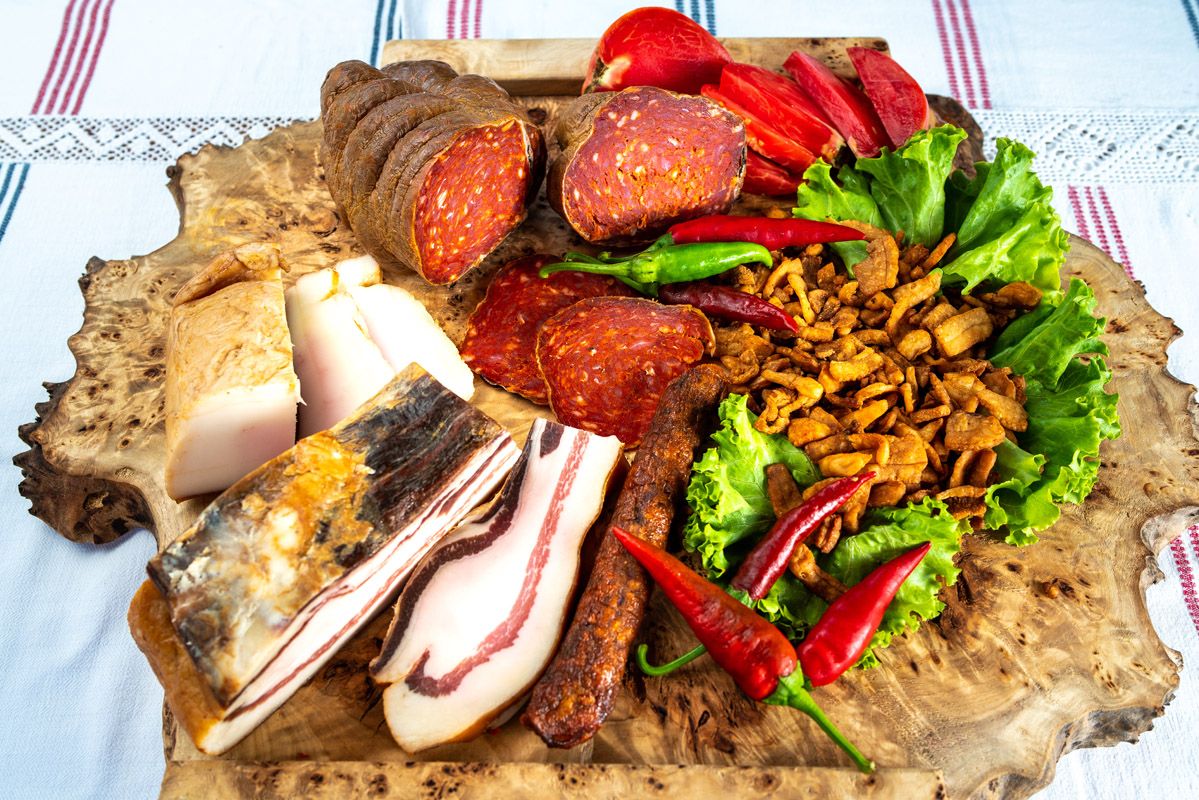
COLD HORS D’OEUVRES
When it comes to cold hors d'oeuvres it is commonplace to think of smoke-dried meat, but dairy products have also been very important throughout history, both in the countryside and in towns. Usually fresh cheese, sour cream and butter were served with sausage, cracklings, bacon and other meat dishes early in the morning. Lately, due to various influences, there are more and more dairy products being served, but fresh cheese, sour cream and butter have been the constant for a long time.
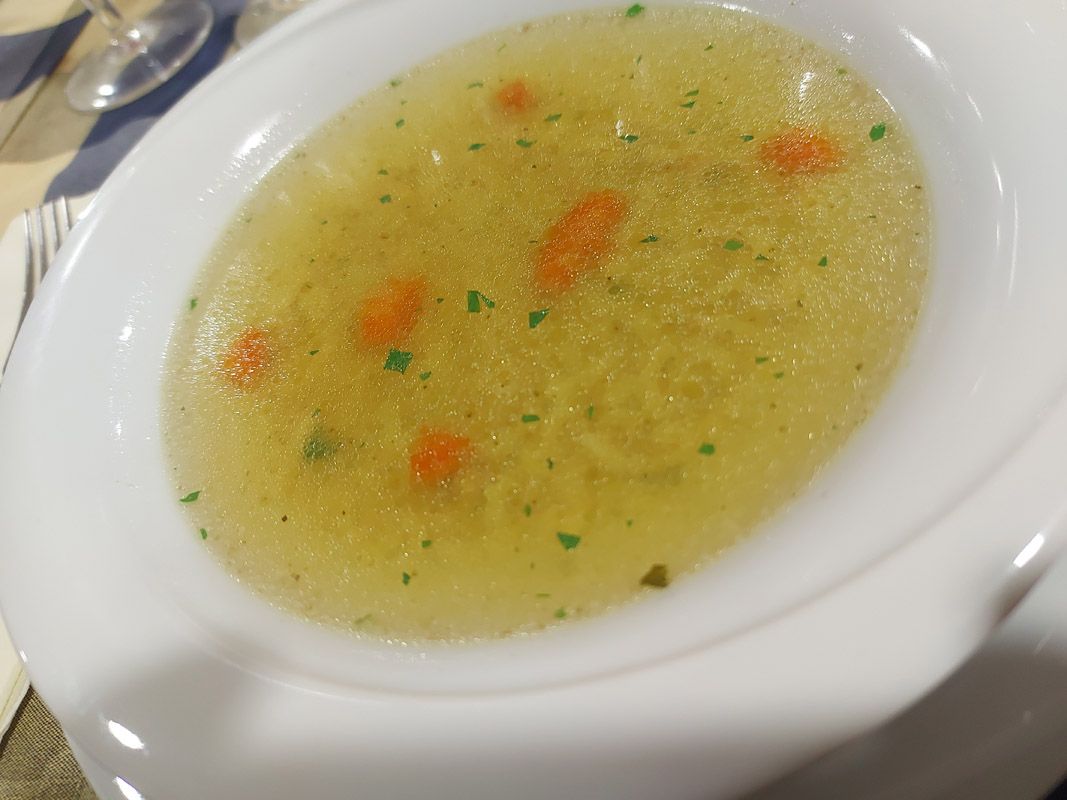
SOUPS AND HOT HORS D’OEUVRES
Although people living in the countryside always tried to make the best use of all the parts of an animal when preparing meals, the soups were not made only with bones and entrails. Moreover, various simple soups were made with flour, potatoes or pumpkin and served as hors d’oeuvres. Meat soups, such as various stews and shepherd’s stew (“čobanac”), were mostly prepared for festivities and were treated as main courses, which can still be recognized on the numerous menus today.
In general, there was not a lot of difference between hors d’oeuvres and main courses in the countryside, since the availability and quantity of certain ingredients, despite the fact that most farmers produced food, were often limited. After all, the tradition of adding noodles or pasta in soups only started because sometimes one had to be satiated only with soup.
The customs were slightly different in towns, as residents of the larger communities generally had more money, and were therefore able to afford more food. Thus, bouillons, i.e. broths were the most commonly served as warm hors d’oeuvres. Cooked meat with various sauces was more commonly served on the tables of civic families, although it was sometimes served in the countryside during festivities. Cooked meat and vegetables topped with fried flour sauce, lightly seasoned with herbs or tomatoes is to this day a common course during various festive meals.
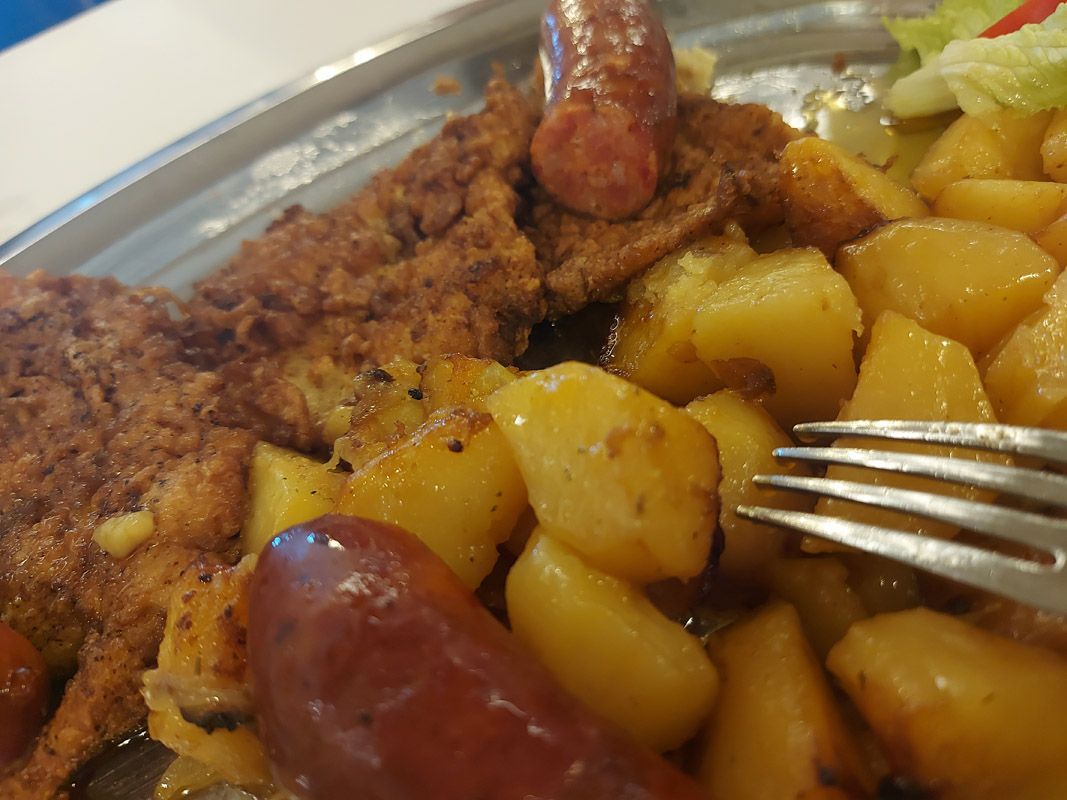
MEAT DISHES
The variety of meat dishes we enjoy today is also a mixture of countryside and town traditions, as well as numerous foreign influences. Thus, roasts and steaks in sauces originated in towns, while in the countryside, these delicacies were simplified, often baked in old-fashioned stoves, or over an open fire.
Vegetables, mostly potatoes, but sometimes even the entrails were added to roasts and baked in the same pot. This preparation method has been improved in the towns due to influences of people from different cultures who came to this region, as mentioned earlier. In towns, especially in the 19th century, people started cooking steaks, fried or prepared in sauces, which was influenced by Central Europe. In this section it is necessary to mention various goulashes and perkelt stews originating from Hungary, which are widely accepted today in all of Slavonia, Baranja and Srijem.
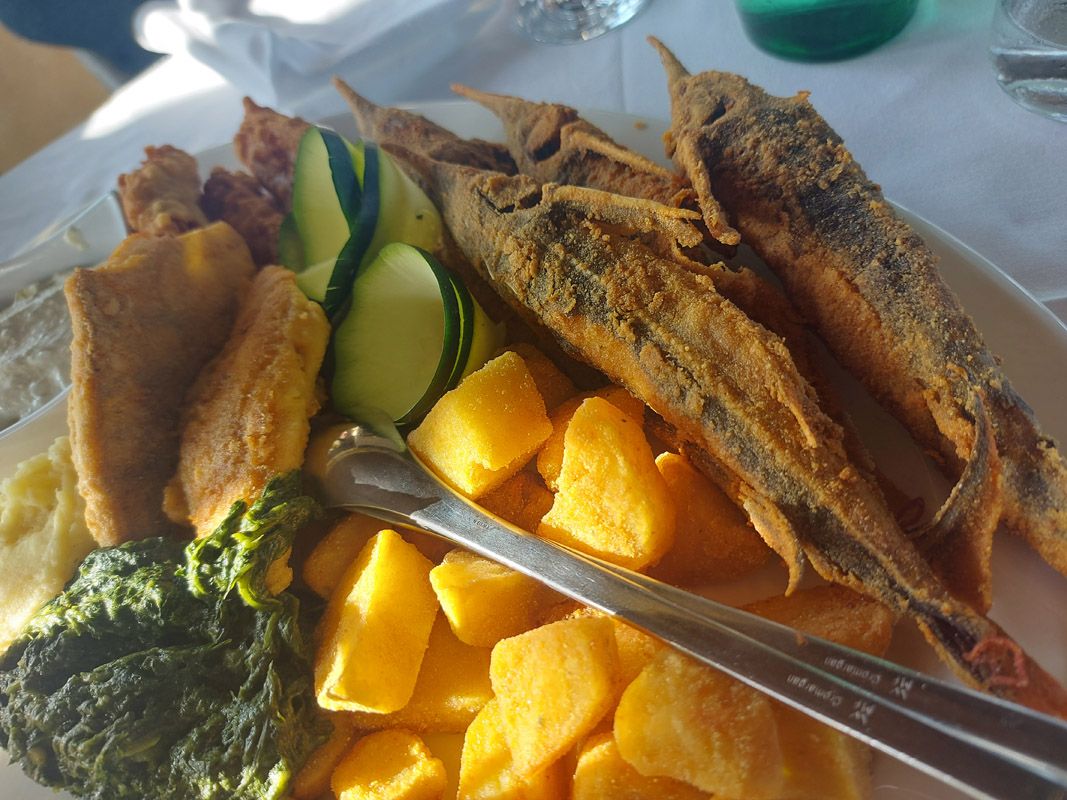
FISH DISHES
Fish has always been available in both small and large settlements, and the preparation was usually simple. Even today, on the numerous menus one can find fish, fried, or prepared over an open fire, such as carp on a wooden fork slowly grilled over an open fire (“saran u rašljama”). The fish was often cooked, though what we today recognize as fish stew (“fiš paprikaš”), was prepared somewhat differently fifty years ago.
Thus “fiš stews” were not always as thick and rich as the ones we can eat at many restaurants today; they were more like fish soups. Nowadays, fish soup is almost a forgotten dish. It was prepared relatively similar to fish stew, but with significantly smaller quantities of onions, peppers and fish. Fish perkelt stews were not often prepared, but as a dish originating from Hungary, they have been present for many years, and their popularity has grown rapidly over the last twenty years.
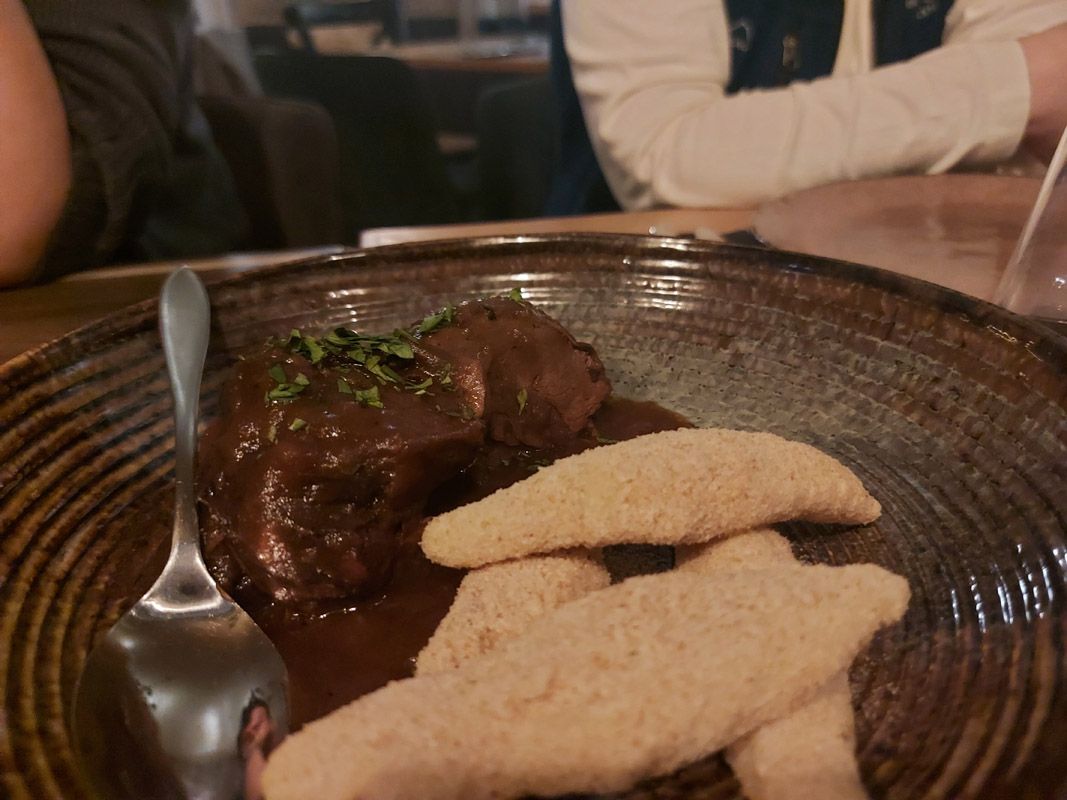
GAME DISHES
The finest venison dishes we know today originated almost exclusively from nobility and very wealthy families. Throughout history, game was intended as a dish for landowners and nobility. Although people living in the villages we were not allowed to hunt without permission, they would sometimes prepare a rabbit or pheasant, which, of course, had been caught illegally.
Probably because of all this, game is still highly appreciated and, because of its characteristics, it is prepared differently than other meat of farmed animals. Since venison is not easy to prepare, the methods of maturing and marinating meat come mainly from Austria and Germany.
Our region stands out precisely because of so many aforementioned influences. Thus in game preparation today, in our cuisine, one can recognize Hungarian, Turkish and other influences, which led to an abundant offer of game delicacies. However, there is probably the highest number of “forgotten” dishes in this group, because game was always expensive and difficult to obtain. Perhaps one of the best examples is pheasant soup which cannot be found in any of the restaurants of this region.
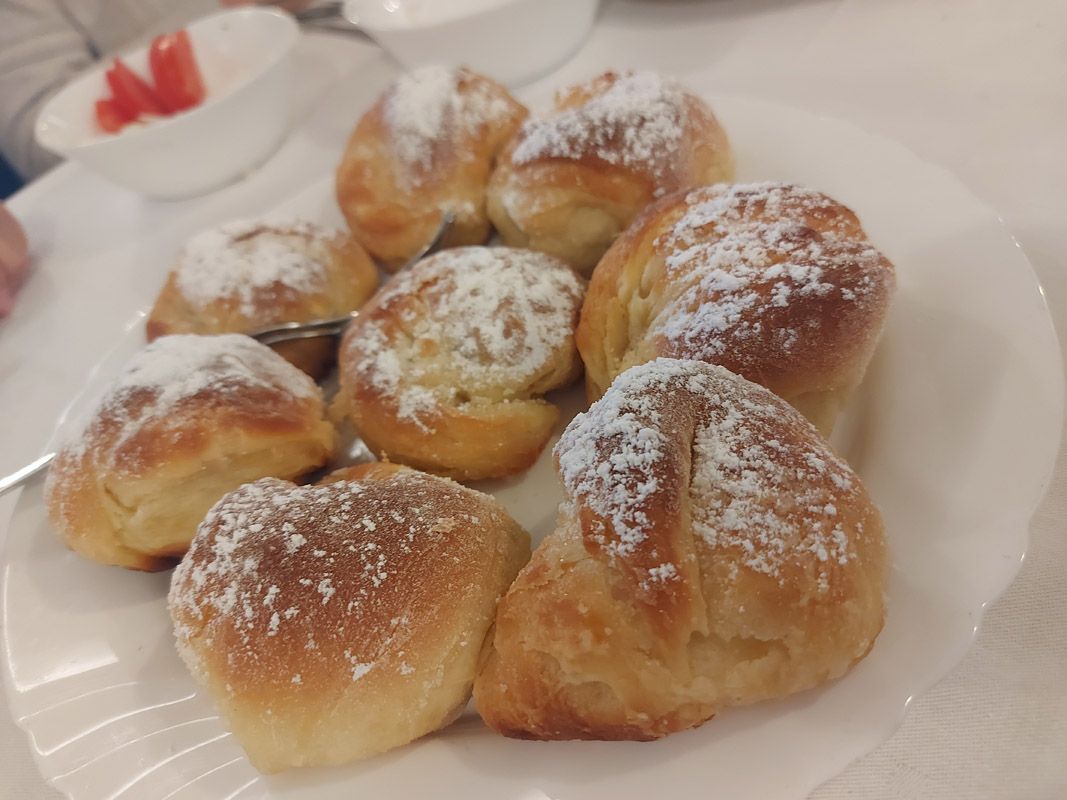
DESSERTS
The difference between towns and countryside can be found in dessert preparation as well. The towns were heavily exposed to Austrian, German and Hungarian influences, thus desserts and cakes served were variations of those served in Vienna or Budapest. In the countryside, desserts were simple and often combined with preserves such as compotes and jam.
In the second half of the 20th century, all these differences came together, as people form the countryside started moving to towns and learned how to prepare new desserts, which they then combined with simple ones. This led to some new desserts, which were a combination of simple countryside and foreign dessert, such as plum or jam dumplings.
We also have our own version of pancakes, and some dishes that arrived from Germanic areas, such as schupfnudeln (Croatian version is “šufnudle”), are no longer used as side dishes to savory stews, but become separate desserts. Even today, we often find Turkish influence in various desserts, especially in those who prepared with walnuts and are often extremely sweet.
All of the above described factors led to creation of what we nowadays call traditional cuisine, which is very specific in our area. When talking about Danubian region's traditional cuisine, we will avoid the term “autochthonous” because, as mentioned previously, our cuisine is a direct product of various influences, which makes it unique. Thus a better term would be “authentic” cuisine, because the mix of styles and food which dominate eastern Croatia is hard to find anywhere in the world.

